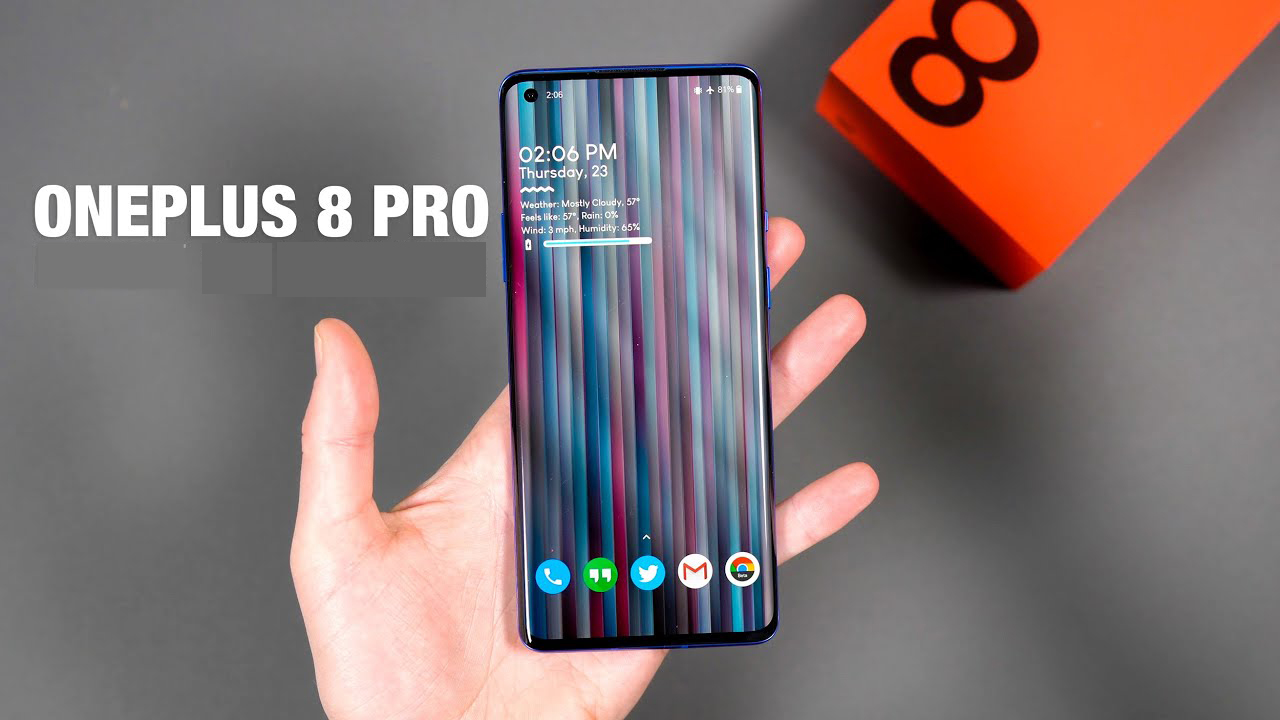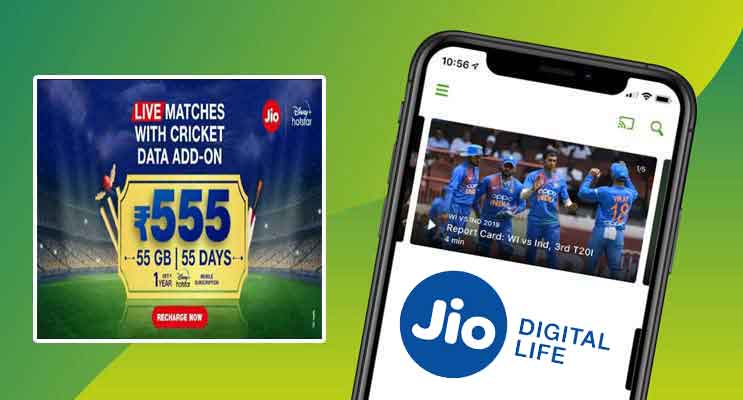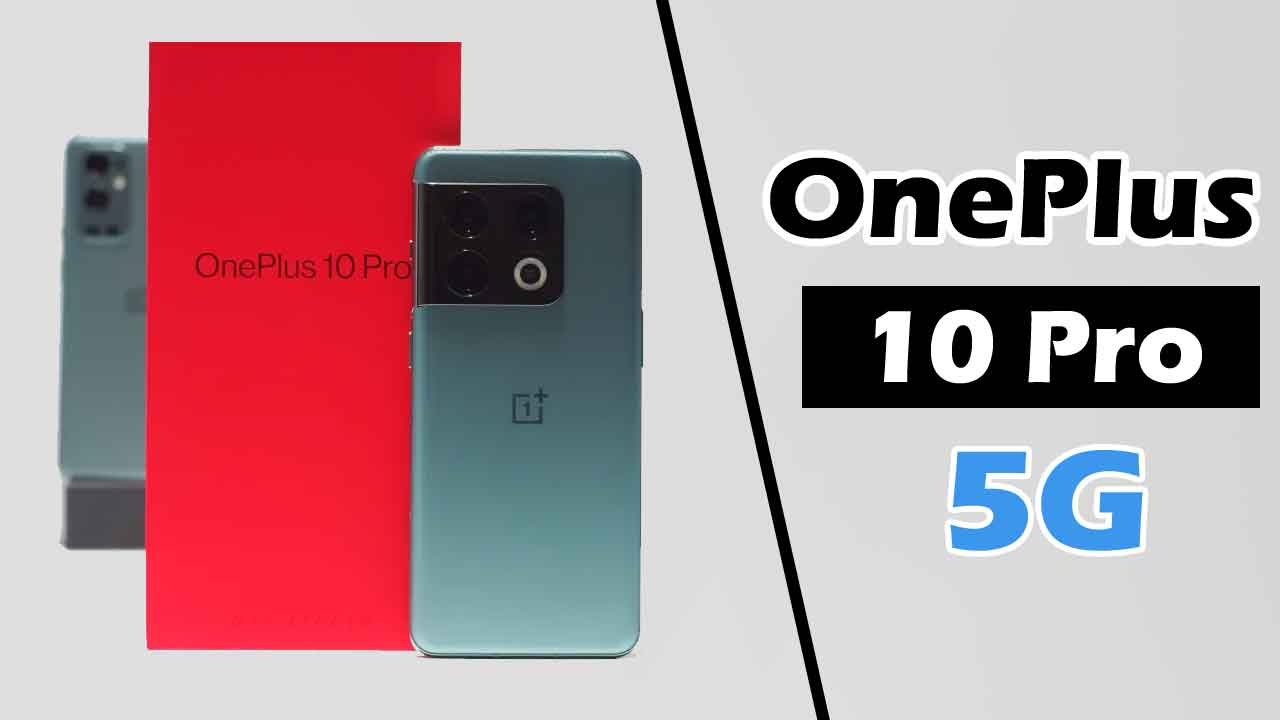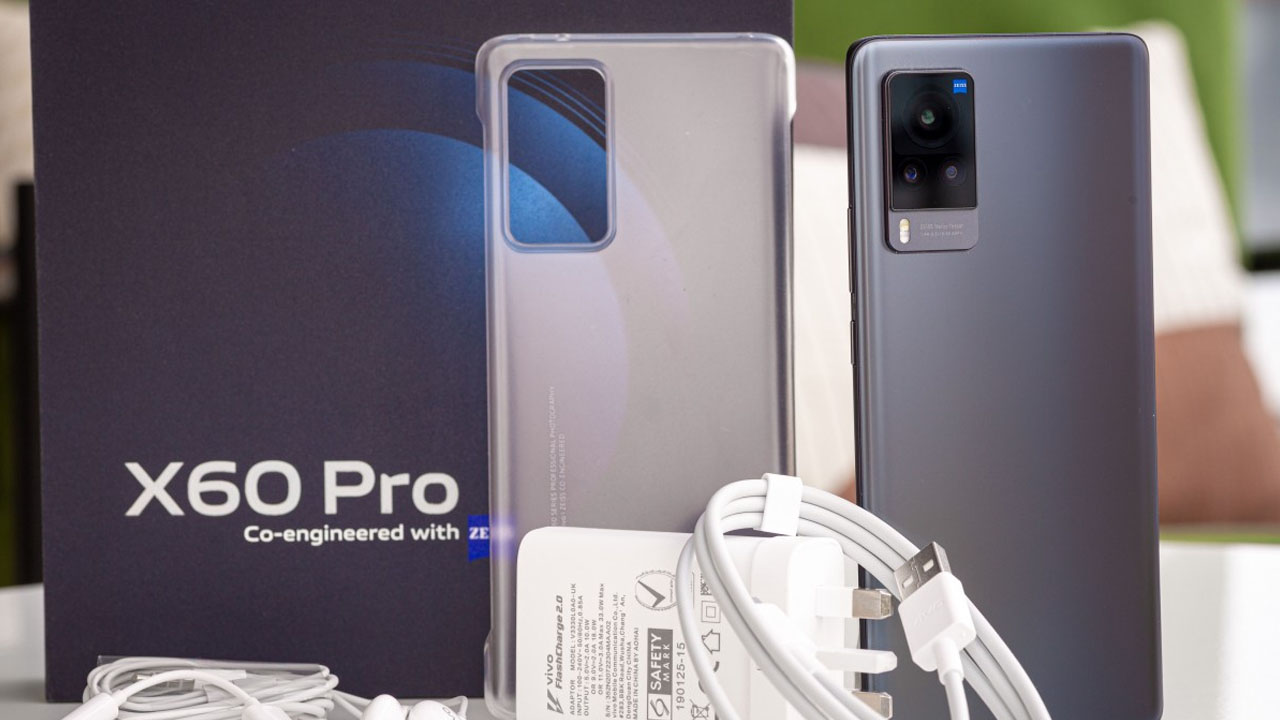The OnePlus 8 Pro finally gets waterproofing and wireless charging certified by IP, after the firm has stubbornly ignored these trends for years. For fans of OnePlus it is like a dream come true. Certain part upgrades are a given, but we finally get a OnePlus flagship smartphone, completely free of compromises by incorporating these two features.
They ‘re getting bigger. In India prices start at Rs. 54,999, which is lower than the international price, and just slightly higher than what the OnePlus 7 T Pro cost when it was released last October. Other than the Xiaomi Mi 10 (Review), there’s no big direct pressure on the OnePlus 8 Pro. Samsung’s S20 series is already much higher priced, there’s hardly any discussion about Asus’ 2020 flagship yet. If you don’t count older flagships that have dropped in price, there’s a pretty open play field right now for OnePlus. So, at around Rs. 55,000 the OnePlus 8 Pro is the best phone on the market and should you pay the premium and buy it over the OnePlus 8.
To put it briefly? Pretty much. The OnePlus 8 Pro is now rated as IP68 for resistance to dust and water and there is fast wireless charging up to 30W. You will also get new camera sensors, a larger battery, a more powerful processor and a higher display of refresh rate. That’s a pretty big upgrade right there compared with the OnePlus 7 T Pro (Review). We ‘re going to get into more detail about each of these new features, but it’s enough to say the 8 Pro packs are in a healthy mix of updates that’s something I really like.
The OnePlus 8 Pro has a style similar to the onePlus 8 but with some minor changes. In fact, its display is rounded on the sides, rather than just curved glass like in the 8. As a result, the display has a more immersive look, but this also means that your fingertips almost always touch a part of the screen while you’re holding this handset.
Palm rejection works well, and even when the sides of my hand were clearly in touch with the panel, I was able to use the OnePlus 8 Pro It gets tricky to try to take pictures with one hand though. I ‘d eventually end up accidentally pressing an icon to another shooting mode or menu. In fact, the bundled case is of huge help here.
The Glacial Green color package I got looks amazing and I love the frosted glass back feel. It can get a little slippery, but fingerprints at least aren’t a big issue. The OnePlus 8 Pro is lighter and slimmer than the 7 T Pro but the camera bump is gigantic, making it a little awkward to hold this phone. The bundled case once again helps with this problem.
Similar to the OnePlus 8 (Review), the SIM tray, Type-C port, and speaker are located at the bottom while the volume and power buttons are positioned at opposite sides of the metal frame.
The OnePlus 8 Pro overall feels solidly constructed and very nice, and looks incredible in this colour. It’s a bit big and heavy but after a few days, I got used to the size and heft. The OnePlus 8 Pro has a pretty large AMOLED panel of 6.78-inch QHD+ (1440×3168-pixel), with high color accuracy and support for HDR10 +. New this year is the refresh rate of 120Hz which is a step up from the 90Hz last year. At QHD+ resolution, the OnePlus 8 Pro will run at 120Hz, which is something you still can’t do on Samsung’s S20 series. Of course, using the phone with that combination would put more pressure on the battery, but it wasn’t a major problem, as I found. Details later on.
The screen is set to 120Hz and full-HD+ resolution out of the box so you’ll need to increase it to QHD+ manually. Content looks fine even in the lower resolution but for the added sharpness I personally preferred native QHD+.
Motion Graphics Smoothing is another feature that’s exclusive to 8 Pro. When enabled, it bumps up the framerate of any video when viewing it in fullscreen for a smoother, soap opera-like feel. It is compatible with most video players and with streaming applications. It works well, but sometimes, flickering or cliping can cause some parts of a scene with rapid motion. The ‘Comfort sound’ option is also fresh in the monitor settings, and is close to the True Tone of Apple. This varies the color temperature of the show depending on the ambient light that is around you.
The show is vivid, bright and colourful. I didn’t find, either, any ‘black crush’ problem that others allegedly faced. Unlike the OnePlus 8, the 8 Pro has a cutout for the selfie camera in the upper left corner too. I didn’t find it distracting and when used in landscape mode, most apps appear to block out the field. The 8 Pro’s fingerprint sensor on-display works very well, without any hassle. Face recognition can also be used, which I found to be equally easy.
Generally speaking, I’m not a big fan of pre-applied screen protectors on smartphones and especially irritating is the one on the 8 Pro. The screen protector often gets in the way when doing a side-swipe gesture, due to the display’s prominent curves.
The OnePlus 8 Pro had been running OxygenOS 10.5.10 at the time of this review. This was after two updates were received during the week we spent checking it. Some users complained that a previous update had downgraded Google’s Widevine DRM to L3, limiting the streaming of video to sub-HD resolutions. That seems to have been fixed with the firmware that we had, however.
The app interface is quite close to the OnPlus 8 interface, with the exception of controls for some enhancements such as reverse wireless charging and improving video playback. The code feels snappy, and overall, OxygenOS is working really well.
The OnePlus 8 Pro is bigger and heavier than the OnePlus 8, and is not the most convenient single-handed phone to use. I had totally loved using it, though. The standard of construction, and show more than make up for its size. The first thing I wanted to try out was that IP68 rating and while I wasn’t going too crazy, a few times it easily survived splashes and was dunked in water.
App and gaming performance was also pretty solid with that off the way. I tested the base model with 8 GB of RAM and 128 GB of storage and Rs. 54,999 is priced. There is a second variant, which has 12 GB of RAM and 256 GB of storage for Rs. 59,999 retails. One key difference compared to the OnePlus 8 is that the 8 Pro uses LPDDR5 RAM, which should be faster and more power-efficient than the LPDDR4X RAM.
Benchmark numbers were close to what I got from the OnePlus 8 because the Qualcomm Snapdragon 865 SoC supports both. AnTuTu returned 5.71.936 points while GFXbench ‘s graphics check for Car Chase returned a good 45fps.
Games worked fine too, no matter what I was throwing at this machine. Real Racing 3 looked great on show for the 8 Pro. Colorful graphics games like Hungry Dragon and Hawk looked especially fine. Some titles like Fortnite will leverage the higher refresh rate display and run at a higher framerate.
Just like on the OnePlus 8, the stereo speakers sound great. They are loud and balanced, and the setting of the Dolby Atmos helps to improve quality and separation in space. HDR content also looks very good and most streaming apps like Netflix didn’t have any problem playing HDR content on the 8 Pro.
Compared to the three on the OnePlus 8 and the 7 T Pro, the OnePlus 8 gets four rear cameras but the fourth camera is a rather unusual one. OnePlus calls it a ‘Color Filter’ camera, and has a 5-megapixel sensor over the lens with a special filter. Images captured with this camera are said to look “surreal,” like in Photoshop when you invert image colors.
While at the time of the launch of this phone this seemed odd, not to mention a little gimmicky, OnePlus faced a lot of privacy backlash as users learned they could use it to ‘see’ through thin materials like certain plastics and clothing forms. OnePlus has therefore disabled this camera in the most recent firmware update. The company has said that with a future update it will fix this and re-enable that camera soon.
The primary camera is having a major update on the run. This is a Sony IMX689 48-megapixel sensor with a much larger native pixel size of 1.12 micrometers compared to the 7 T Pro camera. It facilitates optical stabilisation, and it has an f/1.78 aperture. By default it takes over-sampled images of 12-megapixels.
The telephoto camera has a resolution of 8 megapixels, with optical stabilisation. Finally, the wide-angle camera also gets a major upgrade, and now uses an autofocus 48-megapixel sensor which gives the camera the ability to shoot extreme close-ups. You get the same 16-megapixel Sony IMX471 sensor for selfies as on the 7 T Pro, but with a narrower f/2.45 aperture.
The OnePlus 8 Pro supports 3x hybrid zoom and the digital zoom up to 30x. The true optical zoom level between the main and telephoto sensors appears to be much lower, with the difference in focal lengths at around 0.36x. The 8 Pro uses the main camera up to the 2.9x zoom level, after which it moves to 30x all the way to the telephoto range. Like the 7 T Pro, the autofocus (AF) system in the 8 Pro uses a mixture of PDAF, AF contrast and AF laser.
With images, there is also an HDR mode capturing wider dynamic range. OnePlus has skipped 8 K recording with this series altogether but that is a feature that could be introduced later with an upgrade. Another functionality that is still sadly lacking is selfie camera 4 K video recording which is still stuck at 1080p.
The main camera captures very good images with a neutral tone of colour, while filming under good light. The edges of objects are well defined, texture appears normal, and even at the sides of the frame, there is no visible noise. Dynamic range is also particularly good, with the shadows and highlights showing lots of visible detail. Images taken with the wide-angle camera also look fine, and like the OnePlus 8, colors are well balanced and in line with what captures the main sensor. Wide-angle shots are also saved as 12-megapixel pictures, but if you want to, you can shoot at maximum 48-megapixel resolution.
The OnePlus 8 Pro switches automatically to the wide-angle camera and allows ‘Super macro’ mode when you bring a subject close enough to the phone. That’s very handy and it saves you the trouble of manually doing this. Macro images look very good, and are miles better than you can catch with the OnePlus 8 ‘s dedicated 2-megapixel macro camera.
Next we put the hybrid zoom of the 8 Pro to the test. Of course we had to compare it with one of the best Samsung Galaxy S20 + (Review) zoom camera phones around. The 8 Pro and the Galaxy S20 + are matched fairly evenly at 3x Zoom. The Samsung has a slightly better overall exposure and is less aggressive with sharpening but not far behind the OnePlus 8 Pro. For the Galaxy S20 +, 10x zoom is usually a sweet spot, and the Galaxy 8 Pro matches Samsung in texture and colour. The only difference between the two images is that the Galaxy S20 + raises the shadows and adds more depth to objects. Nonetheless, the two are very close.
Ultimately, the Galaxy S20 + does a great job of cleaning up noise at 30x zoom but at the cost of accuracy. On the other hand, the 8 Pro does manage slightly better detail, but the tradeoff in the image is slight grain. Overall, I’m pretty impressed with the zoom capabilities of the OnePlus 8 Pro, and also quite surprised that OnePlus doesn’t do a bigger deal about this.
The key sensor captures well illuminated landscape shots in low light, with strong details. Nightscape tends to correct the light a little bit and also provides much improved textures. The wide-angle camera is most likely to suffer in low light, but Nightscape can help save shots. Under very dim lighting, the 8 Pro does not turn to the focus on the images, and simply uses optical zoom with the main sensor.
Perhaps the most fragile of the lot is the selfie camera. It handles HDR well and captures decent skin tones but even under good lighting, skin texture appears heavily processed. We managed to get decent results indoors, with good artificial lighting. Skin textures seemed soft in very low light though, and details weren’t perfect. Although the screen flash is very useful for illumination, it does not help to enhance clarity or texture.
The OnePlus 8 Pro will film video in standard 16:9 at up to 4 K 60fps, and an aspect ratio of 21:9 that OnePlus calls 4 K CINE. I don’t think the lack of 8 K recording will put a lot of people off, even if it would have been a nice feature to flaunt. There’s a new HDR mode capturing a much wider dynamic range, allowing you to target objects directly toward any source of light and still get well-exposed images. This only works at 1080p 30fps, or 4 K 30fps, and when you use it, you can not switch between sensors. The tests however are very impressive.
The image quality is very good in standard video mode, exposure is handled well, and the footage stabilized. Here, while recording at up to 4 K 60fps, you can switch between the main, wide-angle, and telephoto cameras, which is something not many flagships offer.
Certain modes of photography include panoramic, slow motion, timelapse, portrait, and pro. Just like some competitors, the OnePlus 8 Pro doesn’t have many frills in the camera app but it does nail the basics. Having said that, I ‘d like to see a video pro mode with manual exposure controls, concentration peaking etc. Autofocus tracking would have been very useful too.



